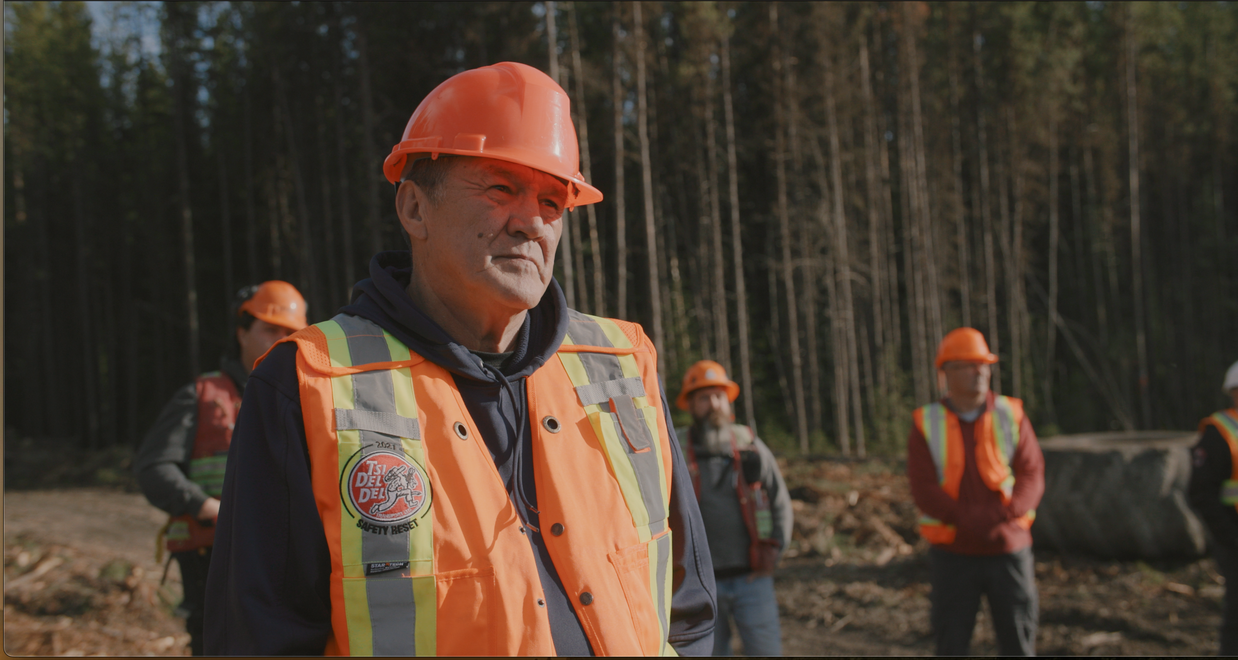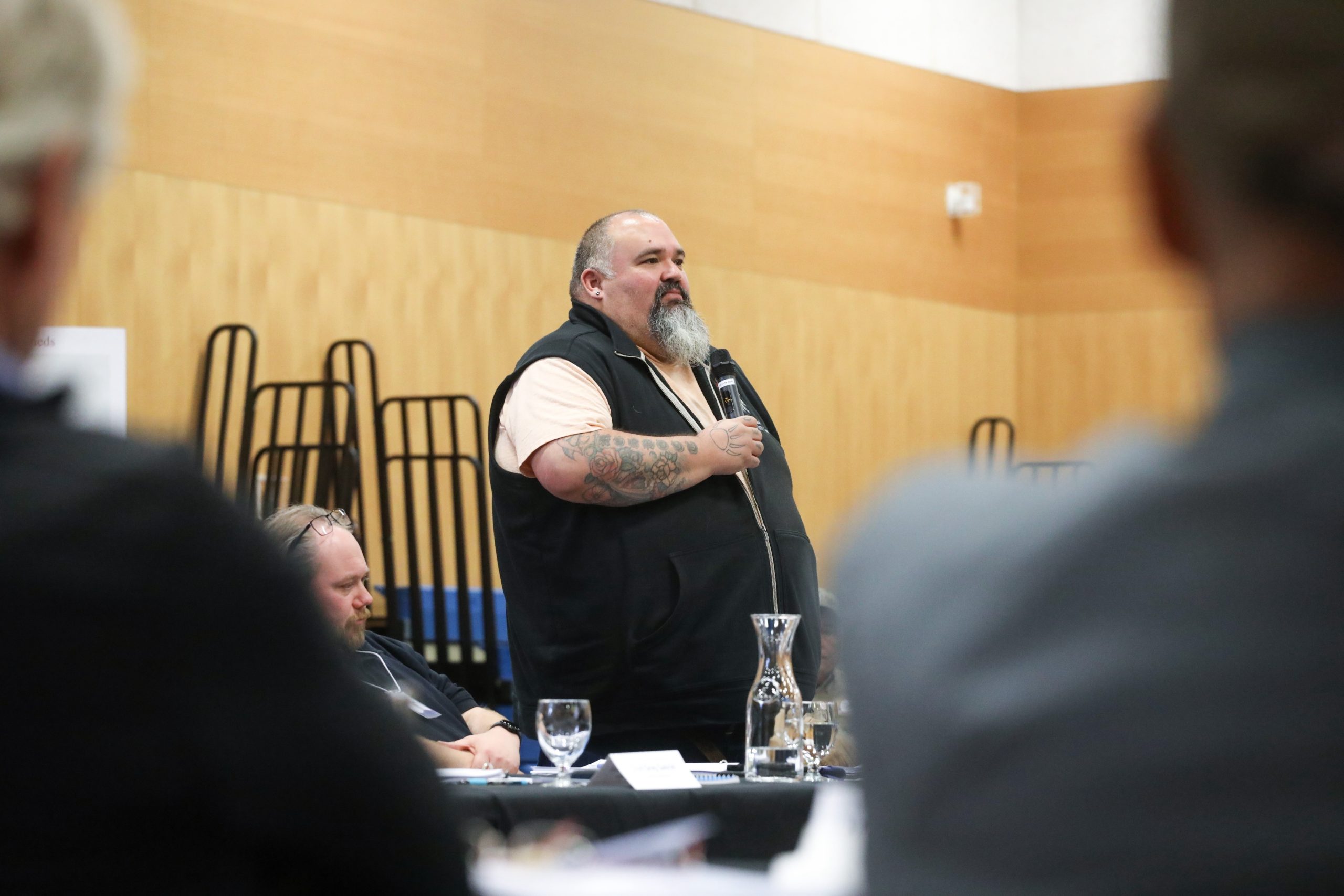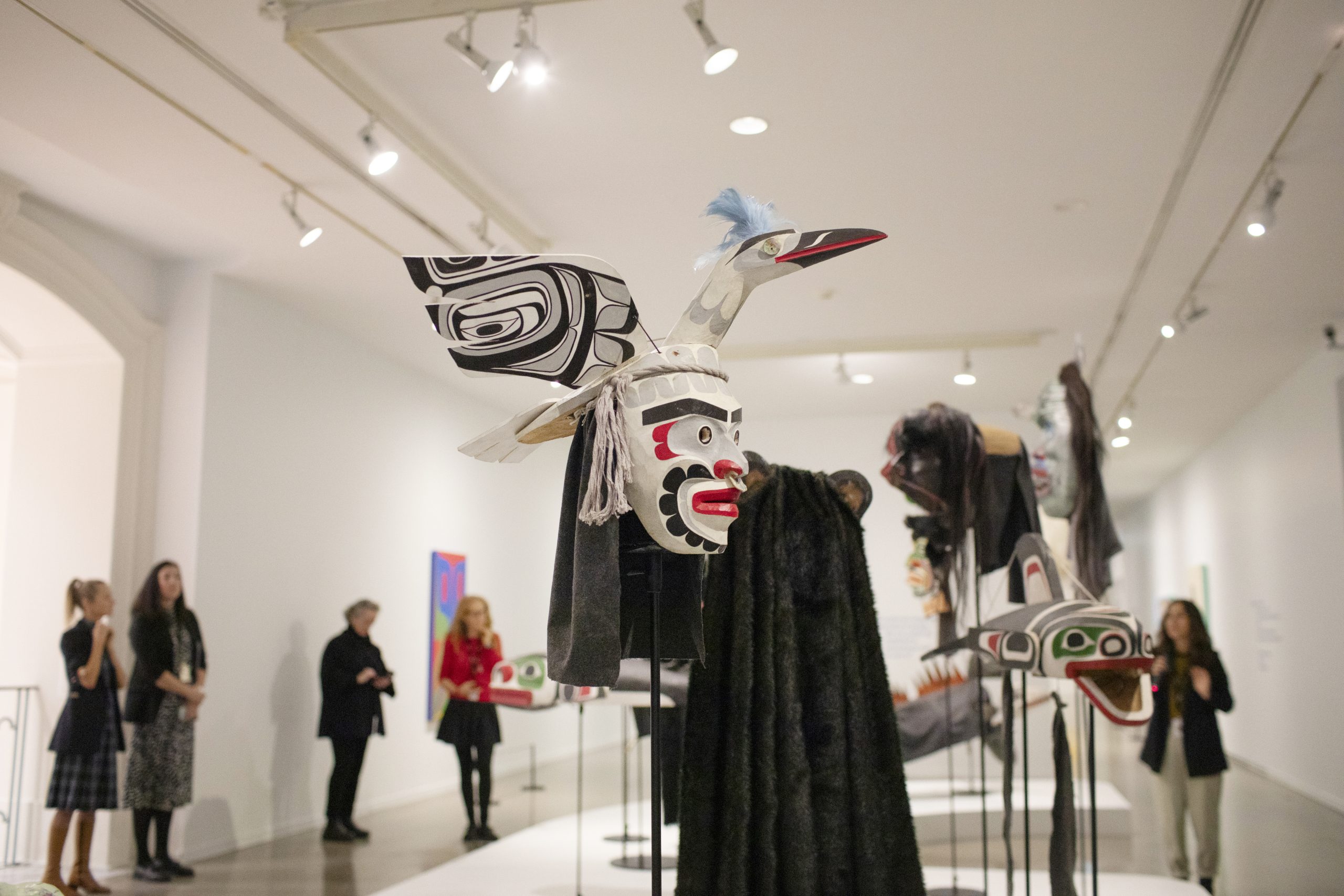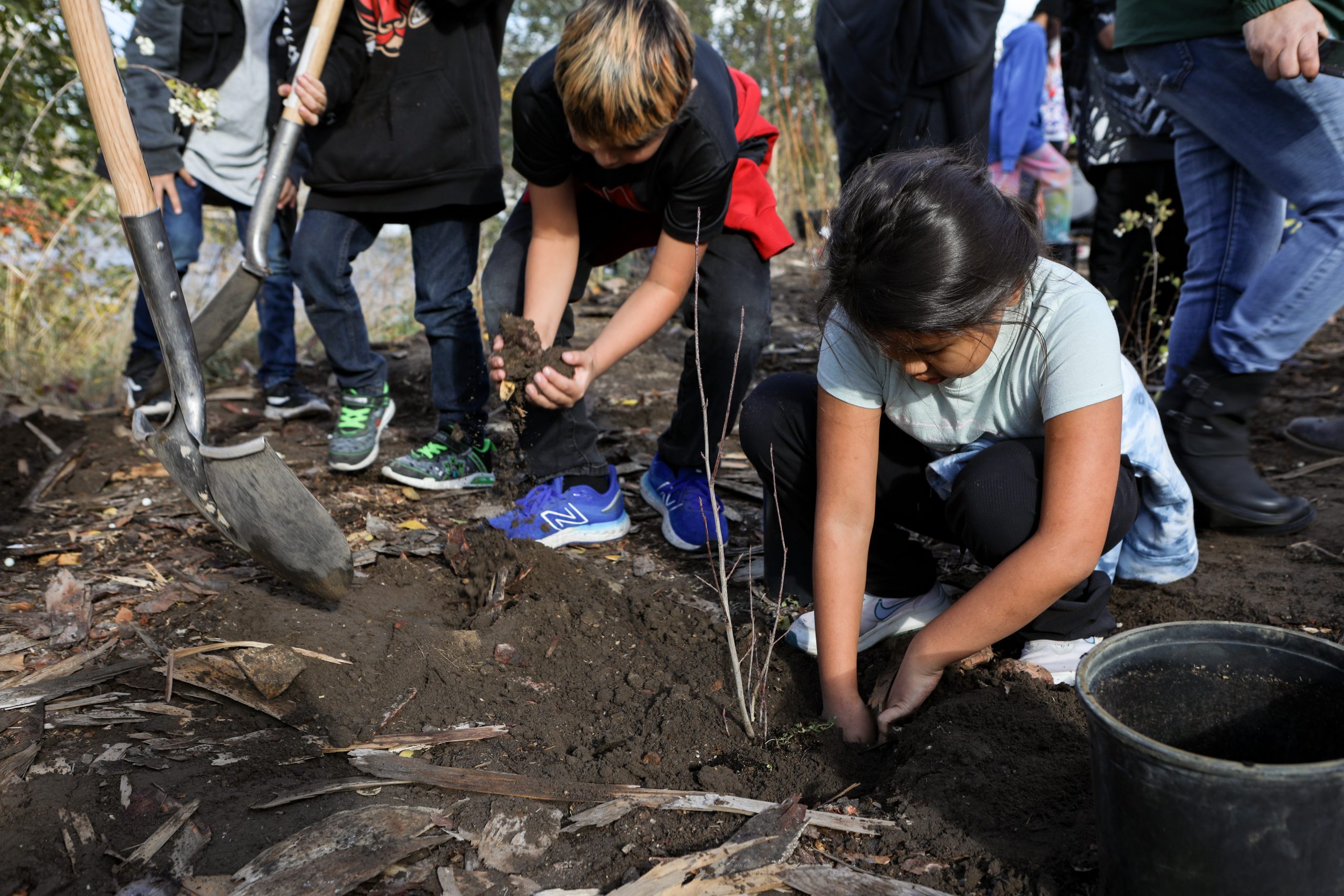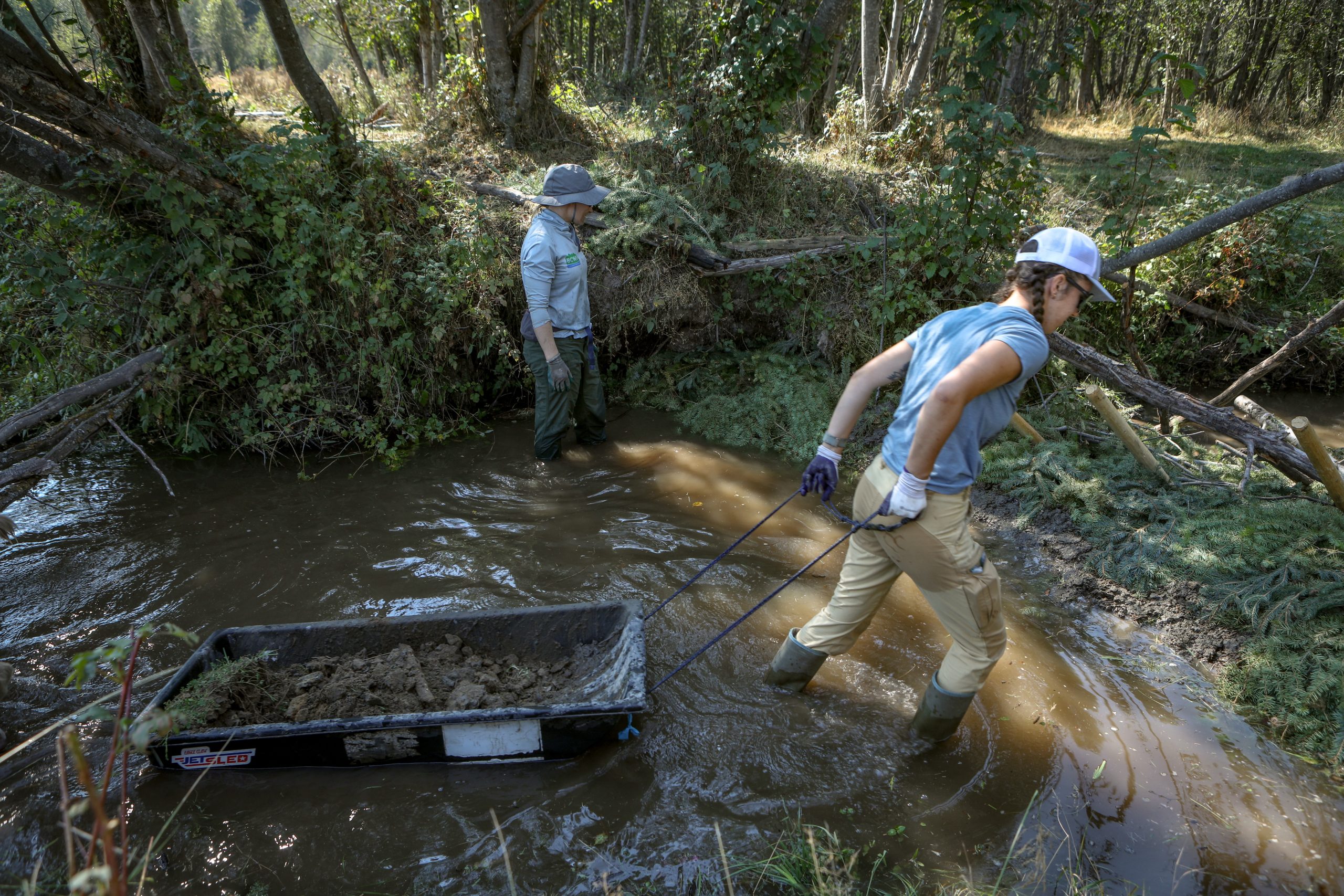Demonstrating unity, syilx Okanagan people and their kin cross the colonial border on horseback
The Unity Ride on Saturday included about 20 riders who went through one of the international checkpoints that divides sovereign territories
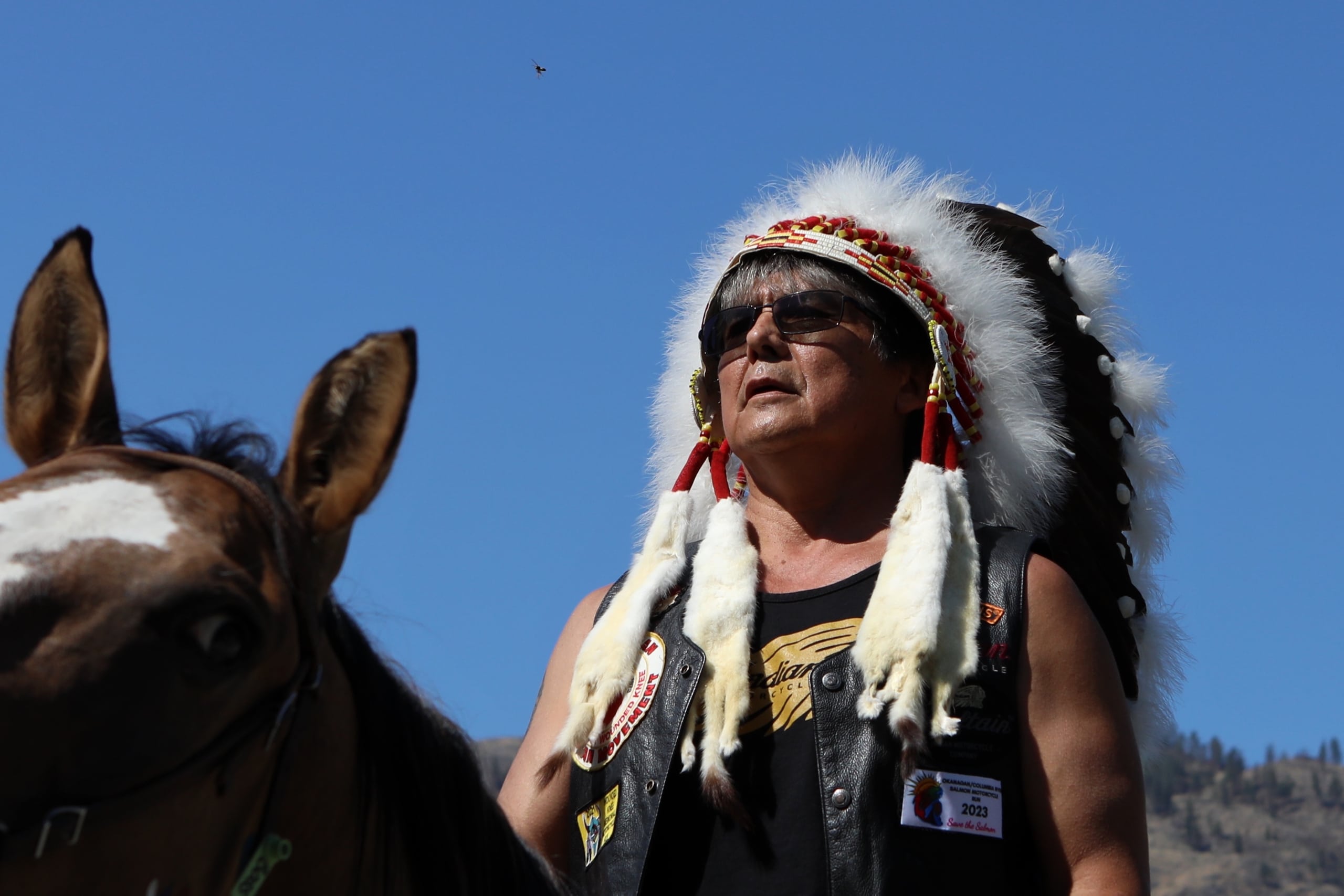
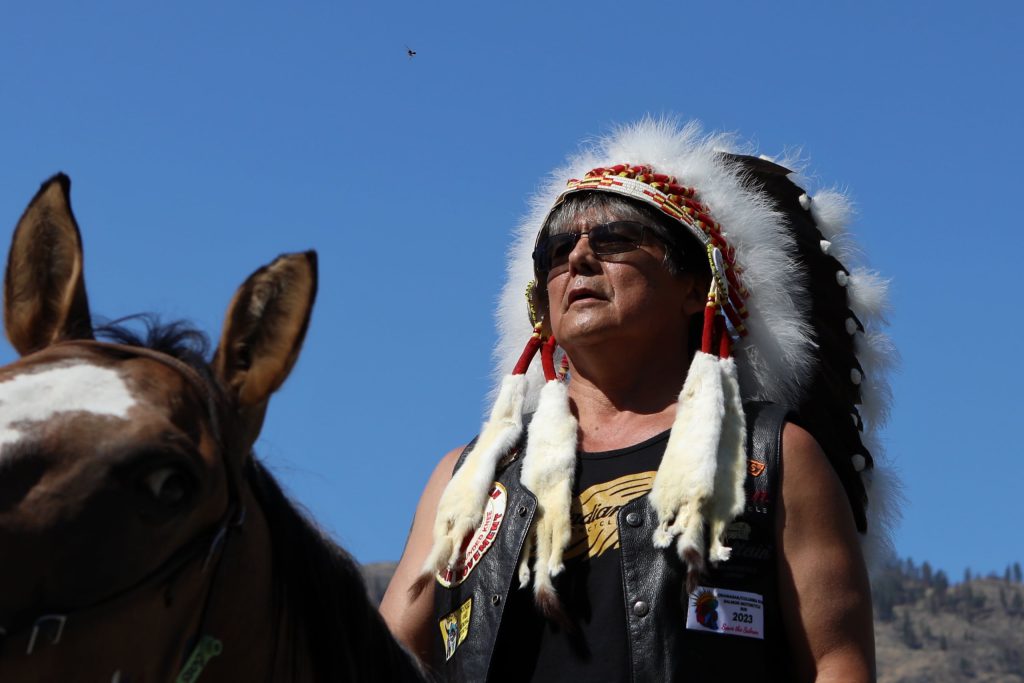
As a demonstration of their sovereignty and unity, syilx Okanagan people and their kin crossed the colonial border that divides their territories on horseback on Saturday.
The Unity Ride was co-led by the Secwépemc (Shuswap) Nation, with people from both communities making up about 20 people who rode horses from “Canada” into the “United States” through the “Osoyoos-Oroville” crossing in syilx Okanagan homelands.
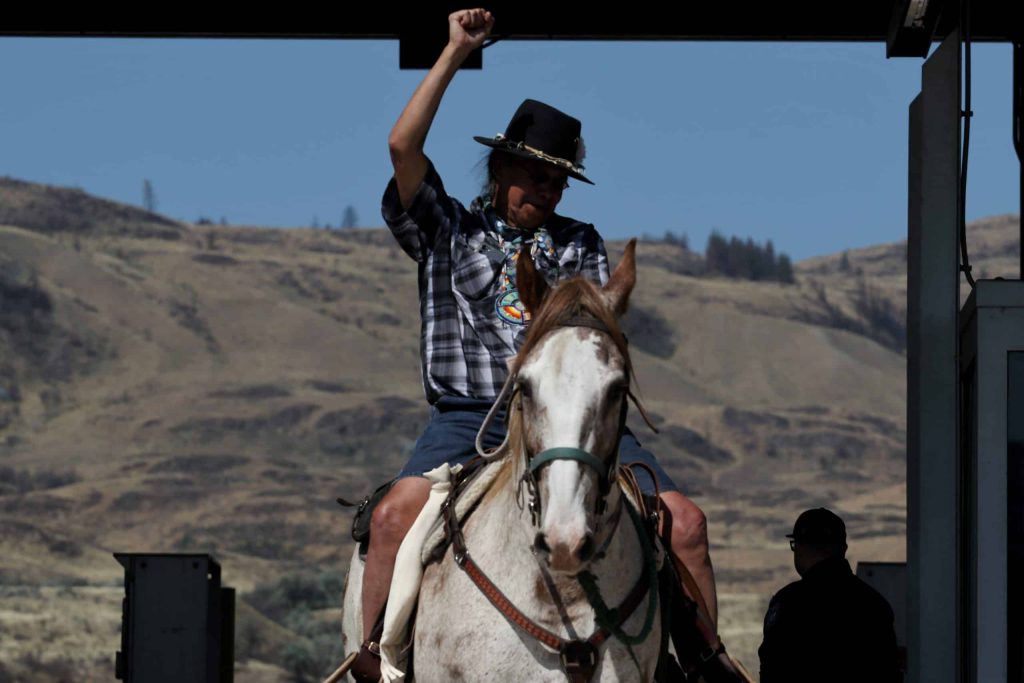
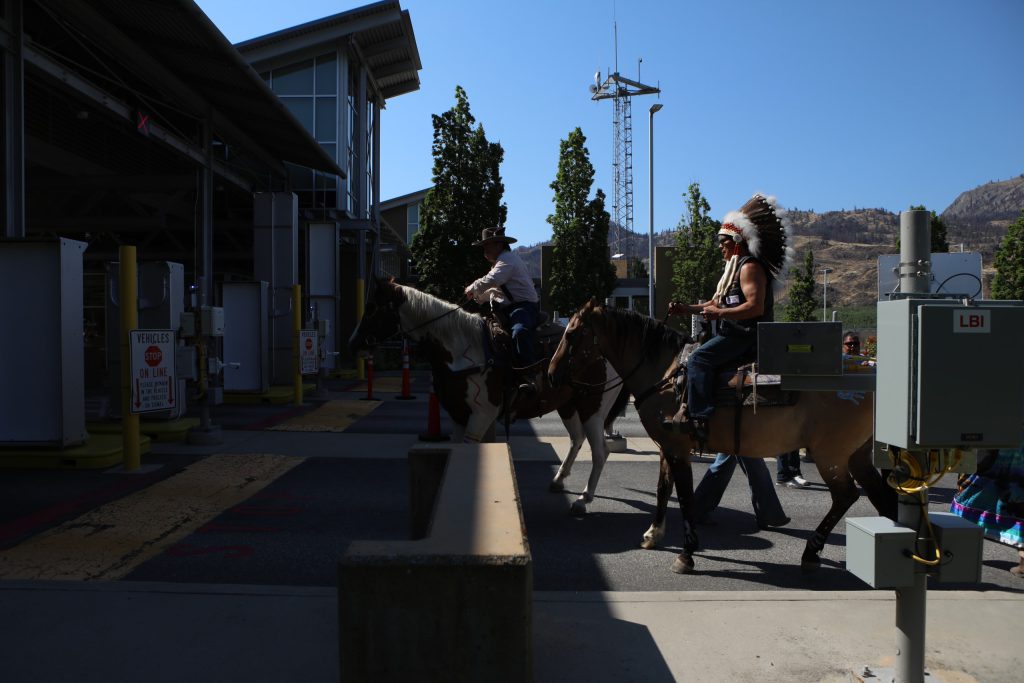
As the riders crossed, there were Okanogan people from the “U.S.” side, as well as guests from the Navajo Nation in attendance. They sang, cheered and drummed with pride as the riders and foot-travellers each made their way through.
The 49th parallel dividing “Canada” and the “U.S.” has split Indigenous Nations across Turtle Island for hundreds of years, with the syilx Okanagan being forced into two separate bodies in 1846 by the Oregon Treaty.
Their homelands extend from north of what’s been briefly known as “Vernon” across the border to “Colville.”
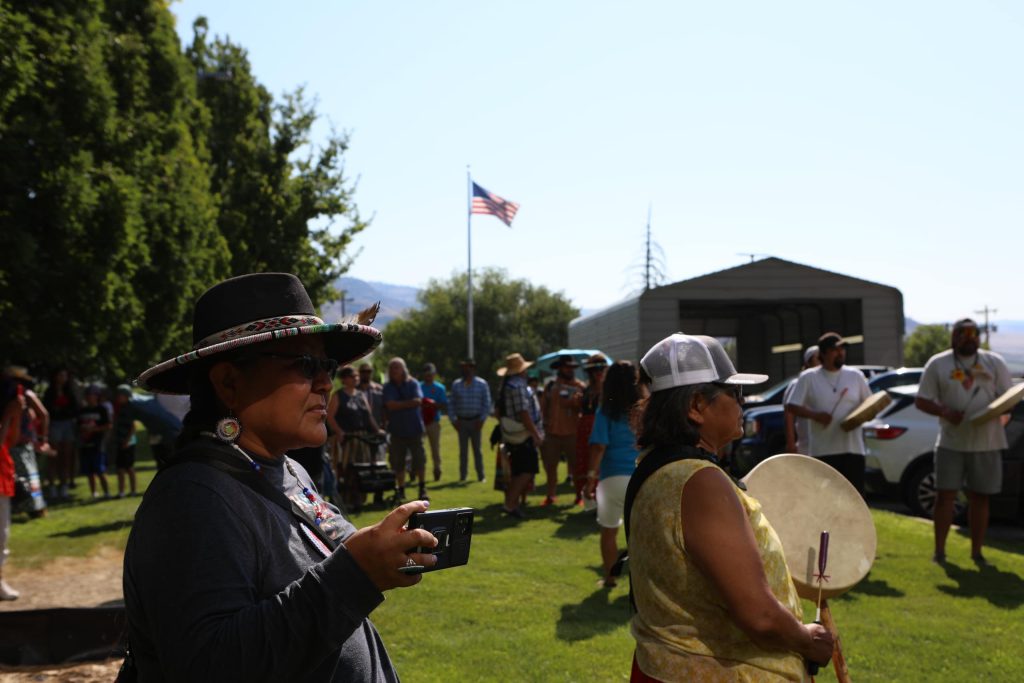
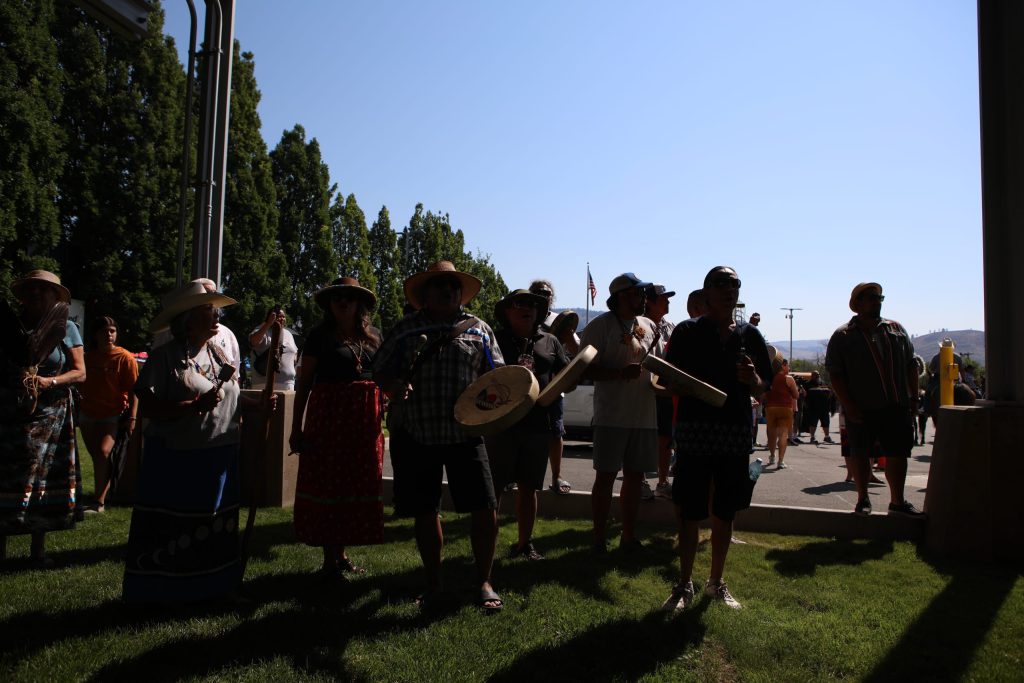
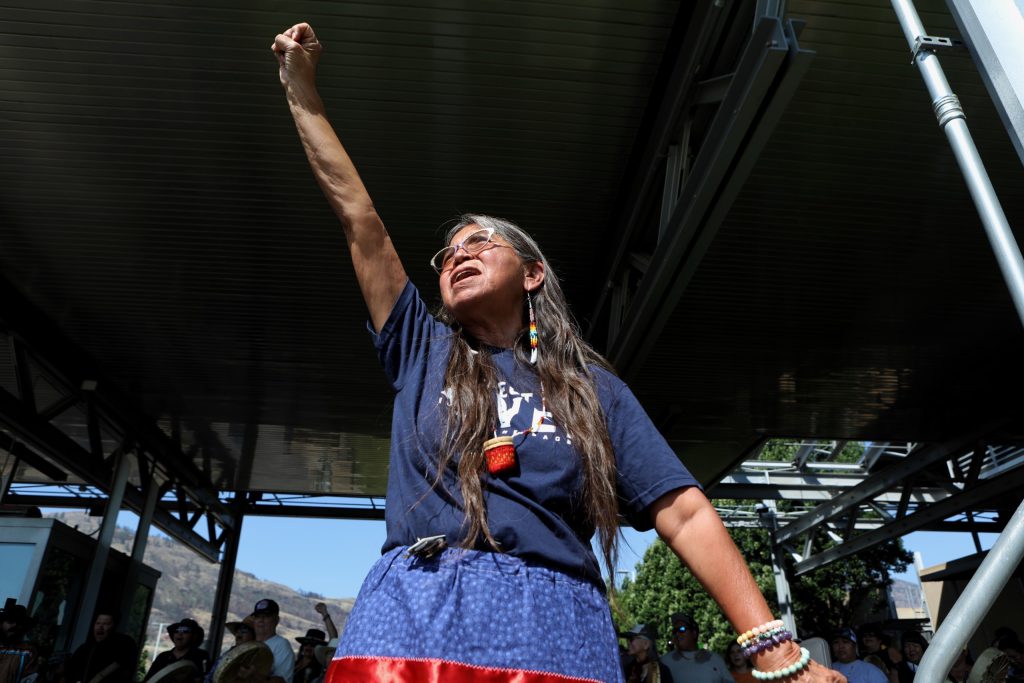
Osoyoos Indian Band (OIB) y̓ilmixʷm (Chief) ki law na Clarence Louie was one of the riders and said he never thought he would cross a border on a horse.
“The Shuswaps and the Okanagan, we’re horse-culture people,” he said. “We owe a lot of our past to them, to the horses.”
The group of horseback riders ranged in age from Youth to Elders, including 94-year-old OIB Elder qʷʕayxnmitkʷ xʷəstalk̓iyaʔ Jane Stelkia.
“We used to cross the border in a wagon when I was a little kid,” she said.

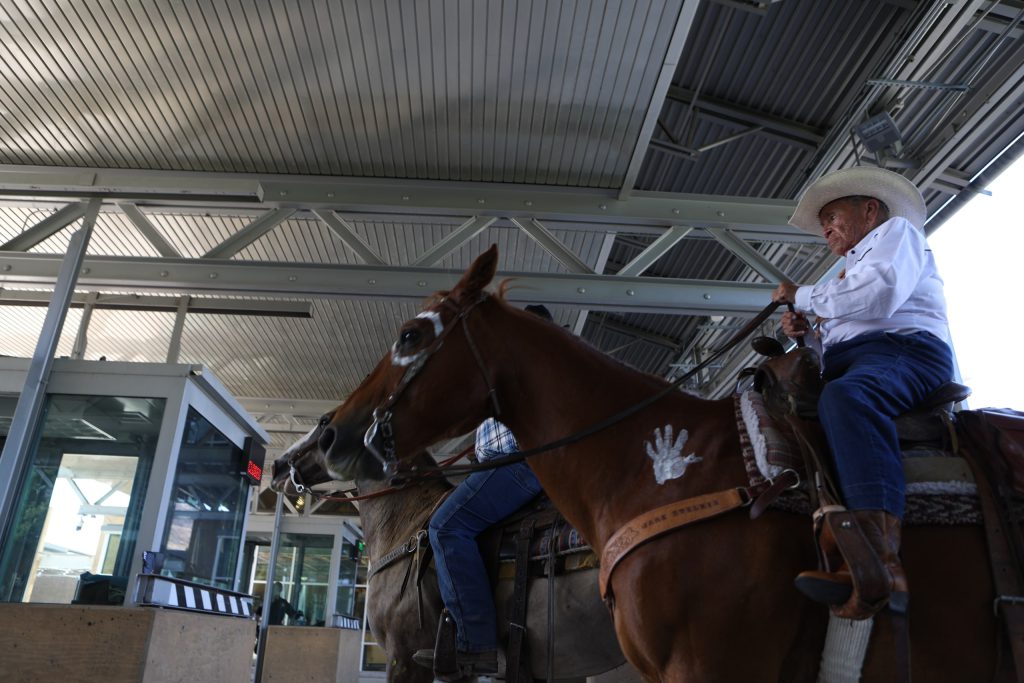
It had been a days-long journey for some, particularly those riding from Secwepemcúl’ecw.
“This ride is not a protest. It is, rather, a unity ride — a unity ride that demonstrates solidarity,” said Rosanne Casimir, Kúkpi7 (Chief) of Tk̓emlúps te Secwépemc.
“That’s what brings us here, and affirming our rights as First Nations to cross this border.”
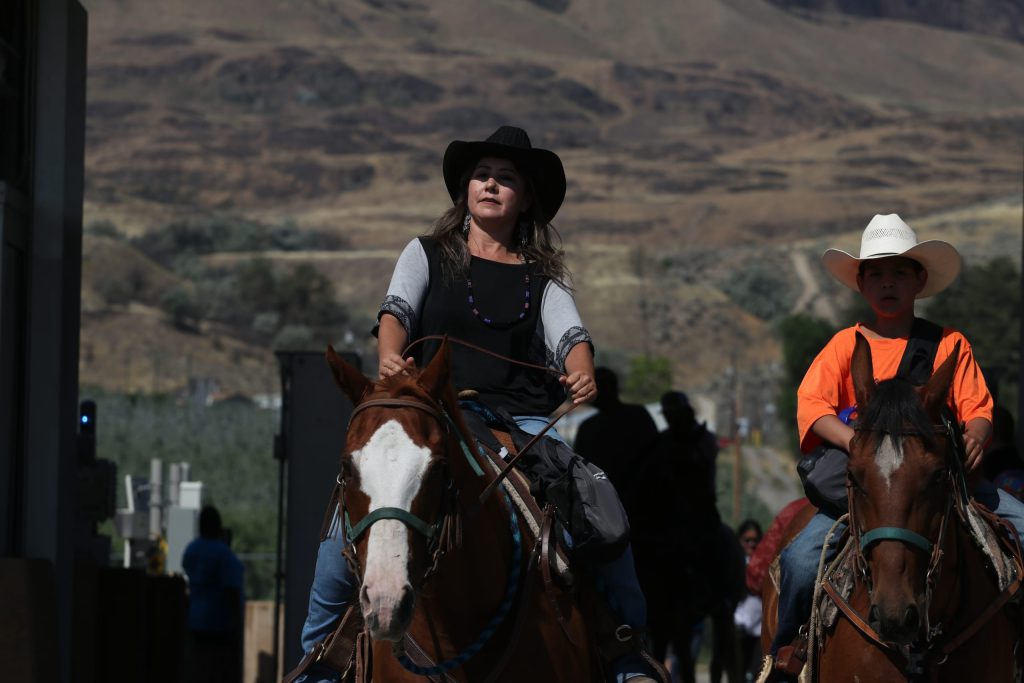
The Unity Ride marks the second time this month where members of the syilx Okanagan Nation gathered and travelled past the international border to uphold their sovereignty. Dozens had paddled through their ancestral waters for the annual Sukʷnaqin July 4th Canoe Journey.
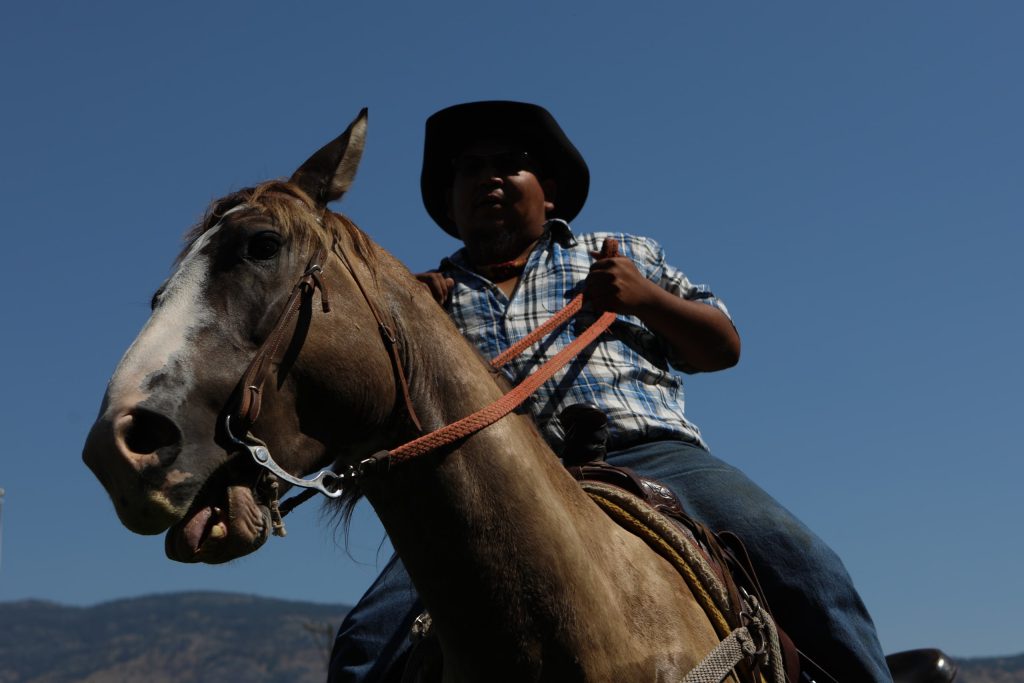
“The Americans and the British decided against our wishes — they didn’t consult our people — to split this 49th parallel as a border separating those two countries,” said Louie.
Leading the group on-foot through the border were Okanagan Indian Band Chief Byron Louis and Lower Similkameen Indian Band Chief kalʔlùpaɋʹn Keith Crow.
“When I crossed that border on a horse, some people came up to me and said this has never been done before, as far as our people gathering here — and it has been done before,” Louie said to the crowd.
He brought with him and referenced a picture of three unidentified chiefs who had gathered at the border for its centennial celebration in 1946.
“To be here today, to look at this picture that was taken in 1946 almost 60 years ago — wow, almost 60 years ago, we gathered like this to remind these Americans and Canadians,” he said. “To hear our drums here, to hear our songs here.”

He spoke of the 1794 Jay Treaty, which was an agreement made by Great Britain and the “U.S.” that permitted Indigenous peoples living on either side of the boundary the ability to freely pass and re-pass by land or water.
Legislation enacting these rights, however, was never adopted by “Canada.”
“We aren’t normal Canadians and Americans — in fact, some of our people say we’re not Canadians and Americans,” said Louie.
“We’re syilx people — Okanagan people.”
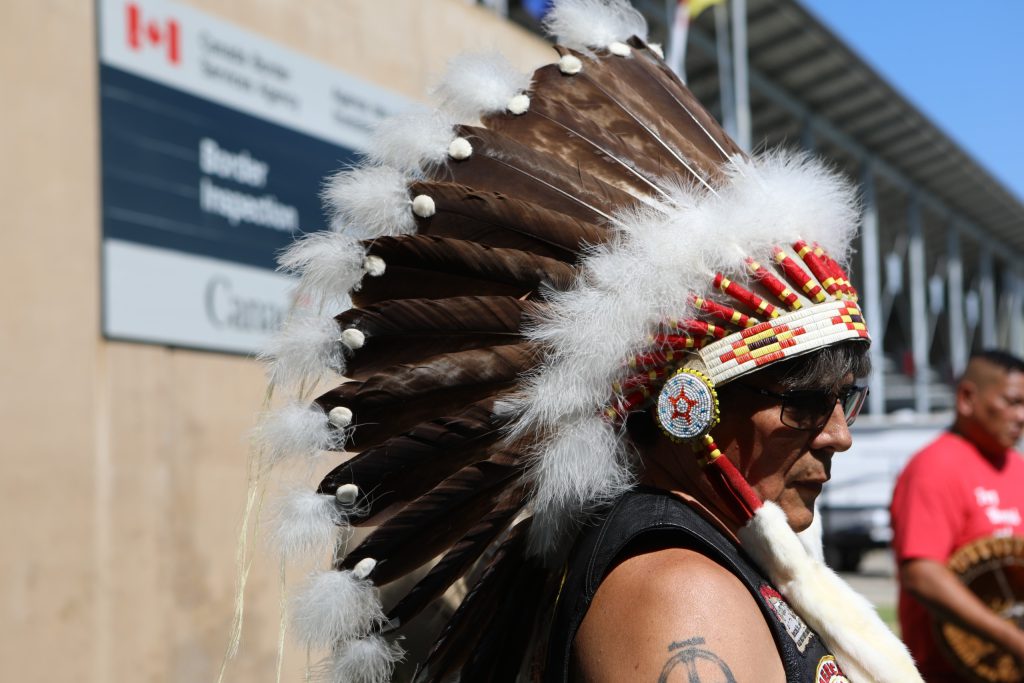
Similarly, Casimir called the border an infringement on the sovereign rights of Indigenous Nations.
“The U.S. and Canadian border cross, this is about educating them on our rights,” said Casimir. “It’s also about educating them as well to respect who we are as First Nations, as Indians.”
Louie expressed gratitude to the Shuswap Nation Tribal Council for taking the lead on organizing the gathering. Secwépemc Elder Adele (Ethel) Thomas thanked the chiefs of today for standing up for their communities, and honoured past chiefs “that have loved us, that paved the path for us.”
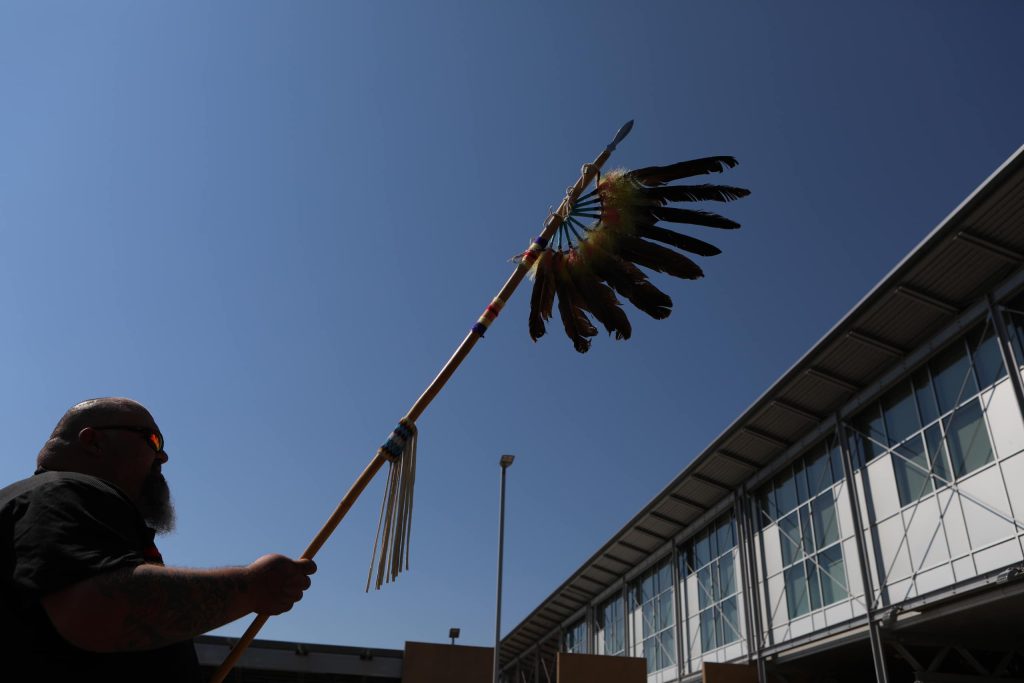
“That’s why we’re still here,” said Thomas.
“I look around this crowd and I see a lot of connections. Each one of us — we’re all family. We should treat each other as family.”
After chiefs, Elders and Youth from each of the Nations spoke, the gathering ended with drum songs, with people going their separate ways on each side of the border.
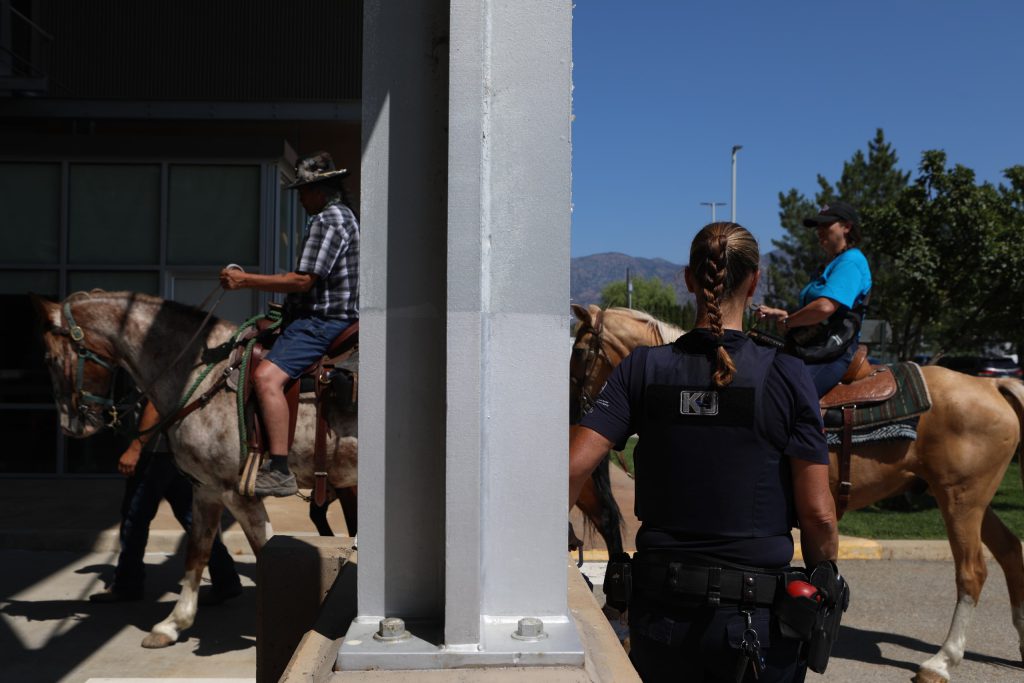
Before the final songs were sung, nk’lxwcin Chad Eneas asked the crowd to challenge the mental and physical limitations that come with colonial boundaries.
“In our culture and our history, we have stories about people that can travel. Stories about our power, to go places in our mind,” said Eneas, who is a syilx traditional ecological knowledge (TEK) coordinator at the En’owkin Centre.
“This border represents limitations in our customs, in our culture. We didn’t have any limitations to what our power was in our mind.”
Author
Latest Stories
-
‘Bring her home’: How Buffalo Woman was identified as Ashlee Shingoose
The Anishininew mother as been missing since 2022 — now, her family is one step closer to bringing her home as the Province of Manitoba vows to search for her
-
‘We all share the same goals’: Tŝilhqot’in and syilx foresters learn from each other
Nk’Mip Forestry and Central Chilcotin Rehabilitation visit their respective territories, sharing knowledge and best practices
-
IndigiNews is hiring for two new positions
We’re looking for an Operations Manager and Audience Engagement Editor to join our team



